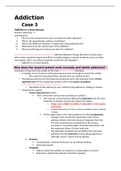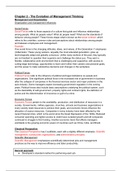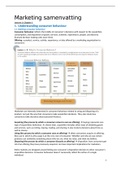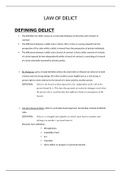The existence of externalities is often cited as a key reason for market failure
and a justification for Government intervention. What is the meaning of
externalities in health care? Giving examples of externalities, discuss what
measures Governments often take to address them and to what extent these
measures have been successful. (25 marks)
Externalities are the costs and benefits which arise from the interaction between
a firm and a consumer, but which may have a positive or negative spillover effect
upon the third party. In the case of health care there are external benefits to the
third party (society). If Health care was provided by the free market, firms would
price the health care product / service according to the private costs incurred.
Due to several reasons (including prices being too high for the majority of the
population), health care would be under consumed and therefore underprovided
by the free market. Thus the full external benefits would not be fully realised and
social inefficiency arises. To correct this Governments may choose to intervene in
the free market and improve the allocation of resources into health care.
Healthcare is regarded by many as a merit good. This is something which society
thinks should be made available to people, irrespective of their ability to pay.
Merit goods have positive consumption externalities on the third party. In this
case externalities would include greater economic growth for the country because
if everyone has access to health resources they will be free of most diseases and
illnesses, able to work productively and therefore contribute to GDP so that
potential growth is achieved. Diseases are prevented from spreading and can
even be eliminated if everyone and not just the few who can
afford, are vaccinated, therefore avoiding the significant quantity of scarce
resources (with opportunity costs) that are directed into curative treatment.
Medical resources being extended to everyone will mean that inequalities are
removed so that the poor are not socially excluded. Poor health is often
associated with poverty and this in turn can lead to crime and
therefore more resources directed to policing and punishment as well as a
widening gap between the haves and the have nots.
The reason for such externalities existing is because the firms that provide health
services will price products according to their private costs with their profit
margins included. Given the high cost nature of health products (highly trained
health professionals such as doctors, GPs, Surgeons, nurses and the expensive
drugs and hospital equipment), the prices charged will be beyond the affordability
of most people. This therefore results in people choosing to accept their medical
conditions which may become worse or may naturally be overcome, but in due
course. All of which prevents the above external benefits from reaching those
that cannot afford. There are other reasons for such market failures; the under
allocation of resources into the consumption of a merit good such as health. For
, instance there may be information failures. This means that individuals
undervalue their marginal private benefit, in the sense that they are short sighted
about the importance of paying for health products and treatment. For instance
HPV vaccinations (that have recently been made available to young girls on the
NHS) may not be paid for by parents because of their cultural, religious bias but
also because of their lack of scientific understanding of how the virus is
contracted leading to cervical cancers. Incidentally this leads to the ‘principal
agent' problem where the principle (parent) is making decisions for the agent
(child) which may not be in the best interest of the agent, especially later on in
life.
Diagram 1
Positive externality diagram (Anderton)
The market for health care is shown on diagram 1. In the absence of government
intervention and thus assuming there is a price on the health product, free market
equilibrium would be achieved at A. At this level of output marginal social benefit
is greater than marginal private benefit, suggesting there are positive
externalities. The triangle GHK shows the welfare gain that could be achieved if
output rose to the socially optimal level of OB. Since health firms will not increase
such output unless profit can be made, it becomes the responsibility of the
government to do so with the use of varying policies.
One method of correcting health market failure, if health care were to be
provided by the private sector, is through a subsidy. There are many examples
already in the UK. For example GPs write prescriptions which then incurs a charge
of £9. The pharmacist then claims the rest of the costs from the
government. Dental treatment is provided for free for NHS patients via subsidies
to private sector dentists (children and pregnant women and some working adults
who are fortunate enough to register at NHS dentist), as are some eye tests. This
ensures that vulnerable patients receive the remedies to alleviate illnesses
relatively quickly without income being a barrier, thus addressing the unequal
distribution of income. A quick recovery will enable the rest of society to benefit
because the individual can continue to participate and contribute to society in a
monetary and non monetary manner. Diagram 2 illustrates the benefits of a
subsidy:
Diagram 2
Subsidy Diagram
and a justification for Government intervention. What is the meaning of
externalities in health care? Giving examples of externalities, discuss what
measures Governments often take to address them and to what extent these
measures have been successful. (25 marks)
Externalities are the costs and benefits which arise from the interaction between
a firm and a consumer, but which may have a positive or negative spillover effect
upon the third party. In the case of health care there are external benefits to the
third party (society). If Health care was provided by the free market, firms would
price the health care product / service according to the private costs incurred.
Due to several reasons (including prices being too high for the majority of the
population), health care would be under consumed and therefore underprovided
by the free market. Thus the full external benefits would not be fully realised and
social inefficiency arises. To correct this Governments may choose to intervene in
the free market and improve the allocation of resources into health care.
Healthcare is regarded by many as a merit good. This is something which society
thinks should be made available to people, irrespective of their ability to pay.
Merit goods have positive consumption externalities on the third party. In this
case externalities would include greater economic growth for the country because
if everyone has access to health resources they will be free of most diseases and
illnesses, able to work productively and therefore contribute to GDP so that
potential growth is achieved. Diseases are prevented from spreading and can
even be eliminated if everyone and not just the few who can
afford, are vaccinated, therefore avoiding the significant quantity of scarce
resources (with opportunity costs) that are directed into curative treatment.
Medical resources being extended to everyone will mean that inequalities are
removed so that the poor are not socially excluded. Poor health is often
associated with poverty and this in turn can lead to crime and
therefore more resources directed to policing and punishment as well as a
widening gap between the haves and the have nots.
The reason for such externalities existing is because the firms that provide health
services will price products according to their private costs with their profit
margins included. Given the high cost nature of health products (highly trained
health professionals such as doctors, GPs, Surgeons, nurses and the expensive
drugs and hospital equipment), the prices charged will be beyond the affordability
of most people. This therefore results in people choosing to accept their medical
conditions which may become worse or may naturally be overcome, but in due
course. All of which prevents the above external benefits from reaching those
that cannot afford. There are other reasons for such market failures; the under
allocation of resources into the consumption of a merit good such as health. For
, instance there may be information failures. This means that individuals
undervalue their marginal private benefit, in the sense that they are short sighted
about the importance of paying for health products and treatment. For instance
HPV vaccinations (that have recently been made available to young girls on the
NHS) may not be paid for by parents because of their cultural, religious bias but
also because of their lack of scientific understanding of how the virus is
contracted leading to cervical cancers. Incidentally this leads to the ‘principal
agent' problem where the principle (parent) is making decisions for the agent
(child) which may not be in the best interest of the agent, especially later on in
life.
Diagram 1
Positive externality diagram (Anderton)
The market for health care is shown on diagram 1. In the absence of government
intervention and thus assuming there is a price on the health product, free market
equilibrium would be achieved at A. At this level of output marginal social benefit
is greater than marginal private benefit, suggesting there are positive
externalities. The triangle GHK shows the welfare gain that could be achieved if
output rose to the socially optimal level of OB. Since health firms will not increase
such output unless profit can be made, it becomes the responsibility of the
government to do so with the use of varying policies.
One method of correcting health market failure, if health care were to be
provided by the private sector, is through a subsidy. There are many examples
already in the UK. For example GPs write prescriptions which then incurs a charge
of £9. The pharmacist then claims the rest of the costs from the
government. Dental treatment is provided for free for NHS patients via subsidies
to private sector dentists (children and pregnant women and some working adults
who are fortunate enough to register at NHS dentist), as are some eye tests. This
ensures that vulnerable patients receive the remedies to alleviate illnesses
relatively quickly without income being a barrier, thus addressing the unequal
distribution of income. A quick recovery will enable the rest of society to benefit
because the individual can continue to participate and contribute to society in a
monetary and non monetary manner. Diagram 2 illustrates the benefits of a
subsidy:
Diagram 2
Subsidy Diagram











